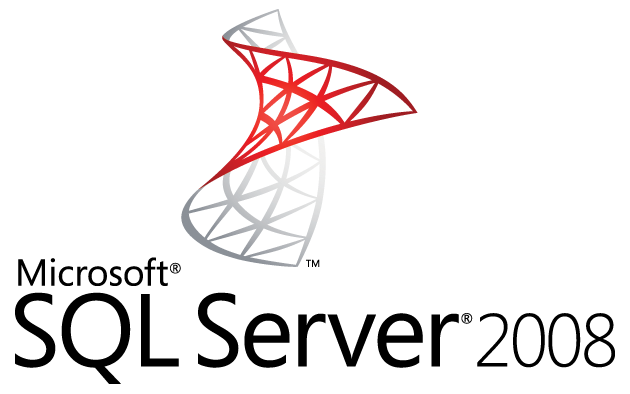| 我们致力本地化我们在尽可能多的语言的网站越好,然而这一页是机器使用谷歌翻译翻译。 | 关闭 |
-
-
产品
-
资源
-
支持
-
公司
-
登录
-
.frm 文件扩展名
开发商: Microsoft文件类型: MySQL Database File/Visual Basic Form File你在这里因为你有,有一个文件扩展名结尾的文件 .frm. 文件与文件扩展名 .frm 只能通过特定的应用程序推出。这有可能是 .frm 文件是数据文件,而不是文件或媒体,这意味着他们并不是在所有观看。什么是一 .frm 文件?
所述的.frm文件扩展常用于不同类型的文件。一个,它被实施为MySQL数据库格式文件,以及与此扩展名的文件是那些包含与MySQL数据库的格式和结构的信息。这种格式的文件可以在已安装的MySQL的任何操作系统上打开。二,此文件扩展名也被称为在那里它被用来指的Visual Basic文本形式表格文件,并与该扩展名的文件是包含在Visual Basic窗体文本信息。这些应用程序被集成为Microsoft Windows,这意味着Windows用户可以以打开和查看这些FRM文件的内容安装这些应用程序的广泛使用的版本兼容支持。如何打开 .frm 文件?
推出 .frm 文件,或者你的电脑上的任何其他文件,双击它。如果你的文件关联的设置是否正确,这意味着应用程序来打开你的 .frm 文件将其打开。这是可能的,你可能需要下载或购买正确的应用程序。这也有可能是你有正确的应用程序在PC上,但 .frm 文件还没有与它相关联。在这种情况下,当您尝试打开一个 .frm 文件,你可以告诉Windows的应用程序是正确的该文件。从这时起,打开 .frm 文件将打开正确的应用程序。 点击这里修复.frm文件关联错误打开一个应用程序 .frm 文件
 Microsoft SQL Server (2008)
Microsoft SQL Server (2008)Microsoft SQL Server (2008)
SQL Server 2008, formerly codenamed Katmai, was released on August 6, 2008 and goals to make data self organizing, management self-tuning, and self maintaining with the improvement of SQL Server Always On technologies, to give almost-zero downtime. SQL Server 2008 also includes support for structured and semi-structured data, as well as digital media formats for pictures, audio, video and other multimedia data. In present versions, such multimedia data can be saved as BLOBs (binary large objects), but they are generic bit streams. It also natively supports hierarchical data, and includes T-SQL constructs to directly deal with them, without using recursive queries. Basic awareness of multimedia data will permit specialized functions to be performed on them. According to Paul Flessner, senior Vice President, Server Applications, Microsoft Corp., SQL Server 2008 can be a data storage backend for different varieties of data: XML, email, time/calendar, file, document, spatial, etc as well as perform search, query, analysis, sharing, and synchronization across all data types. Microsoft Visual Basic
Microsoft Visual BasicMicrosoft Visual Basic
Visual Basic (VB) is an event-driven programming language and integrated development environment (IDE) from Microsoft for its COM programming model that was first released in 1991. Visual Basic is fairly easy to learn and use. Visual Basic was derived from Beginners All-purpose Symbolic Instructional Code (BASIC) and enables rapid application development (RAD) of graphical user interface (GUI) applications, and it can be used to create databases with Data Access Objects, Remote Data Objects, or ActiveX Data Objects. It can also generate ActiveX controls and objects. The language not only permits programmers to make simple GUI applications, but also to develop applications with more complex functionalities. Programming in VB is a combination of visually arranging components or controls on a form, specifying attributes and actions of those components, and writing additional lines of code for more functionality. Scripting languages like VBA and VBScript are similar, in terms of syntax, to Visual Basic, but perform differently. VB can generate executables (EXE files), ActiveX controls, or DLL files, but is mainly used to build up Windows applications and to interface database systems.提醒一句
要小心,不要重命名扩展 .frm 文件,或任何其他文件。这不会更改文件类型。只有特殊的转换软件可以从一个文件类型更改一个文件到另一个。什么是文件扩展名?
文件扩展名是一组三个或四个字符在文件名的末尾,在这种情况下, .frm. 文件扩展名告诉你它是什么类型的文件,并告诉Windows哪些程序可以打开它。窗户经常关联一个默认程序的每个文件的扩展名,这样,当你双击该文件,程序会自动启动。当该程序不再是您的PC上,有时可以得到一个错误,当您试图打开相关的文件。发表评论
有关 Database Files/Data Files
.frm MySQL Database File/Visual Basic Form File

